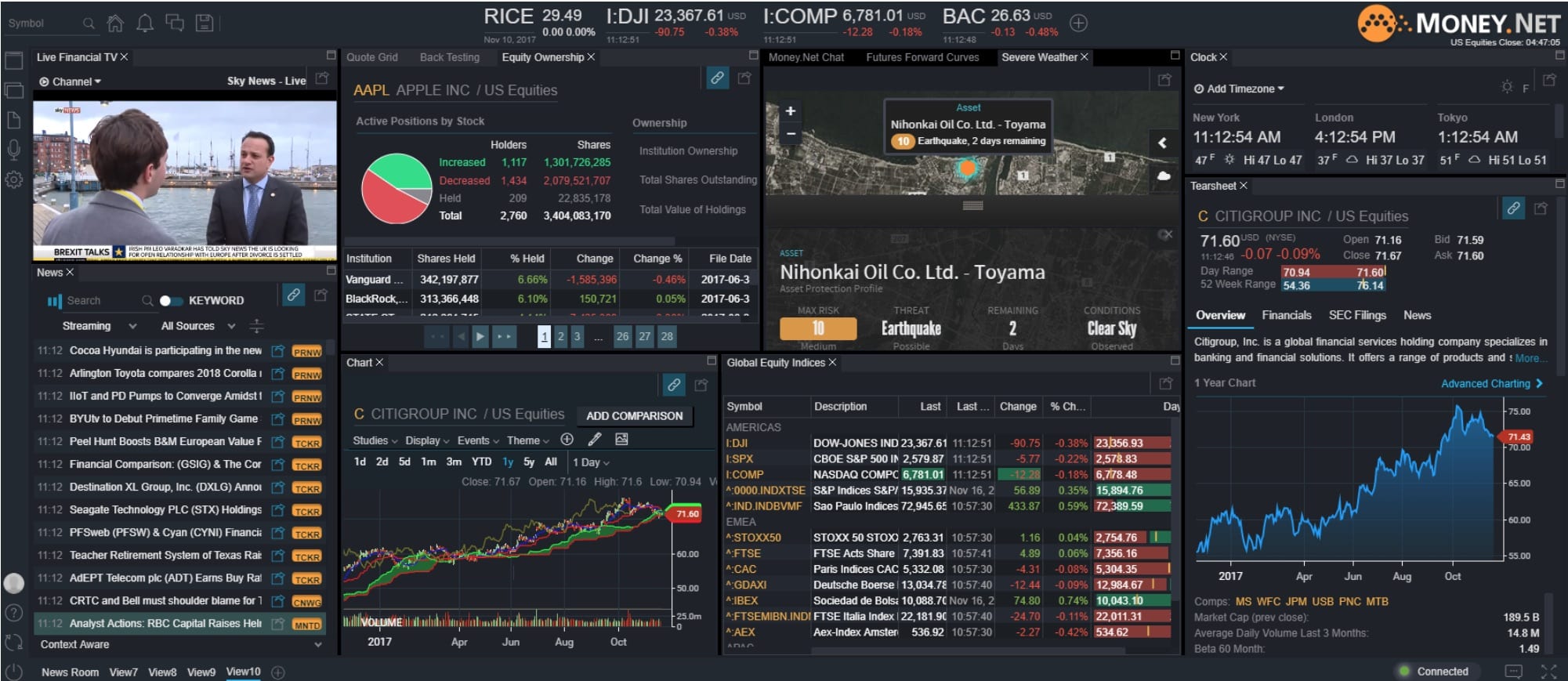The financial information space has been one of the most competitive in recent years, with groups such as Bloomberg and Reuters eating up a large percentage of the market share. More recently however, challengers have emerged such as Symphony and others that are undercutting the costs of financial data and messaging services.
Another group that is strategically situated in the midst of the competition is Money.net, a comprehensive data service provider. Morgan Downey, Chief Executive of Money.net, has a clear vantage point of the group’s own offering as well as that of Bloomberg, Symphony and others. Money.net is a platform that empowers users to analyze and monitor markets in real-time.
The group is part of a newer wave of venues that together with companies like Symphony are driving down the cost of financial data from leaders such as Bloomberg. More recently, Bloomberg and other big names have responded however with low-cost pricing of their own. Mr. Downey was highly skeptical of Bloomberg’s highly reduced pricing structure for its chat service last month, which was a direct attempt to undercut Symphony and other rivals with its own low-cost pricing structure.
Finance Magnates spoke with Mr. Downey, who touched on Money.net’s business strategy and outlook amidst an uptick in competition.

Morgan Downey
How many service providers are you bundling under Money.net presently?
Money.Net now currently aggregates over 250 different services, from exchanges, financial fundamentals, economic data to news and chat. These are all seamlessly provided to customers through a single Money.Net login.
Does the platform fully support the export of data and in what ways are you pushing it?
One of the key features is the ability to perform financial analysis through the Money.Net Excel spreadsheet add-on (money.net/excel). Also, for people that like to perform more hard-core backtesting and historical statistical analysis, the Money.Net Matlab stats integration is fully supported.
How many paid subscribers do you currently have?
We now have over 60,000 registered users with almost 750 firms, including many of the world’s largest banks, hedge funds, financial advisory firms, and business schools with multiple users at each firm.
You state that the quality of the product is on par with Bloomberg’s offering. How are you achieving this at a fraction of the cost?
The cost to build and support a financial data terminal has fallen dramatically over the past 10 years with Cloud computing and many other new technologies. I like to use the analogy of SpaceX vs NASA. The cost for SpaceX to lift a payload to space is 10-15 times less expensive than NASA due to advances in technology.
Bloomberg is a legacy data provider with an expensive old delivery system built in the 1980s. That is one huge reason it is so expensive and we are much more affordable with a better product. They have also been able to charge monopolistic prices for meager services as they were protected by their buyside and sellside chat monopoly.
Money.Net is new efficient technology and we welcome an open ecosystem of services rather than restrictive closed monopolies. So we can offer lower prices due to technological advancements, and we chose to offer lower prices because open ecosystems are generally much better experiences for customers.

What are the main sources of news and Analytics on Money.Net and do clients have to pay additional fees to access them?
For news, we carry many low latency sources in our breaking news feed, including Associated Press, Dataminr, and MTNewswire. We also generate headlines ourselves for scheduled news events like economic data releases and earnings, where speed is essential.
With analytics, we build many of these ourselves as they are core to a seamless customer experience. These include option calculators, ETF and stock filters, portfolio tracking, and alerts.
We do also include third party analytics where they are best in breed. So for example, our geospatial mapping analytic used to monitor the impact of hurricanes and other severe weather on physical assets is a visualization system built by RiskPulse.

















